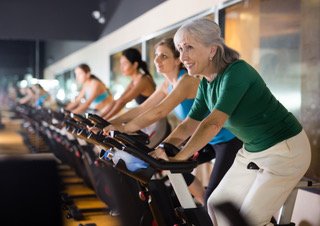
The Mind/Body Connection
As a society, we are increasingly becoming aware of the connection between physical and mental wellbeing. We are learning that exercise and rest affect mental health.
Self Cycle seeks to utilize this mind/body connection and create conditions for healing through a combination of aerobic exercise, expressive therapies, and Internal Family Systems modalities as part of a robust mental health care ecosystem for each workshop participant.
The Road Less Traveled
Marcia offers cycling combined with mental health modalities based on the idea that aerobic exercise and bilateral stimulation can illuminate “trailheads”: entry points into mental processing to be further explored during the reflective portions of the workshop.
Aerobic Exercise for Mental Health
Aerobic Exercise for Mental Health
An analysis of over 100 studies have found that those who engage in aerobic exercise feel significantly less anxious than people who engage in no exercise, or non-aerobic exercise.
Another large scale study analysis shows similar soothing effects on depressive symptoms.That study suggests that your mood improves whether or not physical “fitness” improves.
For the most positive impact, you need to move for over 20 minutes. Marcia has designed this program so that the first 30 minutes of each Self Cycle session are dedicated to movement.
The benefits of aerobic exercise are most impactful after at least 10 weeks of regular engagement. Group workshops support those moving towards integrating more aerobic movement into their lives and mental health care practices while individual sessions help build that routine.
Bilateral Stimulation
Bilateral stimulation activates both sides of the brain which allows for the processing of memories, emotions, and incidents that are stuck in the nervous system.
Therapeutic modalities like Eye Movement Desensitization and Reprocessing (EMDR) – a treatment that’s shown to be incredibly effective for people with trauma, PTSD, anxiety, depression – utilize these principles.
While EMDR most often uses eye movements, audio tones, and taps as stimuli, Marcia uses the movement of cycling to engage the brain, making it easier to process “stuck” memories.



